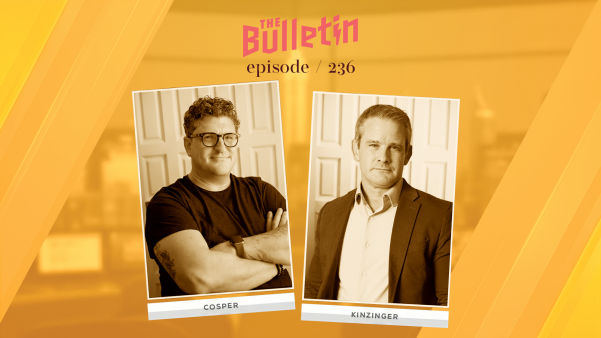And how to overcome objections and get started.
Scripture speaks of virgins and a Virgin Birth, of the erotic and the carnal, of heterosexual and homosexual behaviors, of the body and the flesh. Does the youth group your son or daughter attends ever address these issues? If not, the morning paper does, the evening television news does, the weekly news magazines do, their peers do, and 43 percent of their schools may (results of a 1978 Gallup Youth Survey).
Some religious leaders have been vigorously criticizing sex education in the public schools; innumerable clergy hesitate to risk sponsoring a family life and sex education series in their church. Meanwhile, innumerable teenagers do not hesitate to risk less than responsible sexual behavior in their environment. Our high school youngsters face sexual temptation or sexual themes or sexual innuendoes rather regularly. A school biology class may involve discussions about genetics and genitals, particularly where dissection is a part of the laboratory experience. An English literature class in the classics may discuss various deviant relationships. A social studies class might explore the similarities and differences between marriage customs in various Third World countries and Western civilization. When a health class may offer films, pamphlets, and handouts, whose values will prevail? Will the art class discuss nudity? Playground jokes can easily border on the risqué. And trips to away ballgames where cheerleaders can pair off with players in the back of the bus offer special temptations from the benign to the ridiculous.
In the public high schools, one may find few convinced Christian friends. Away from the classroom—but not necessarily removed from the influence of classmates—television programming becomes rather quickly another battlefield. One would need ESP to know when these graphic elements are due, and one would have to move with alacrity to turn the dial before Hollywood’s latest pandering passes by.
Do the churches have a heart for teenagers, who live in a sex-laden atmosphere? If so, if our teenagers are to be light and salt in their own environment, someone must help them make sense of sexuality. What is the effect of such a sex-laden atmosphere on teens today? Have Christian educators discovered how to influence teen behavior in this area? Much evidence is available on today’s sexual situations in such areas as premarital sex activity, pregnancy, abortion, venereal disease, self-image, one-parent families, and suicide.
The Teenage Environment
Premarital activity.By 1979, 50 percent of metropolitan-area teenage women (ages 15–19) had had premarital sexual intercourse, while 70 percent of men (ages 17–21) were sexually active prior to marriage.
Since the girls in this range typically are involved with males who are about two years older, these data are given for the two different age increments. The surveys by Johns Hopkins sociologists Melvin Zelnik and John F. Kantner document the increased premarital sexual activity of our nation’s young women. While 30 percent had had such experiences in their 1971 study, by 1976 43 percent were active. This upward trend suggests that part of the sexual revolution finds adolescent women catching up with their male peers in premarital sexual activity.
Good data on the sexual mores of evangelical young adults are scanty. One survey disclosed that 22 percent of young adults over age 18 (both for males and for females) who identified themselves as “born-again” evangelical Christians had been sexually active prior to marriage.
Revolutions sweep along spectators, too.
Pregnancy.By 1979, the proportion of American teenage girls who had been pregnant before marriage reached 16 percent.
Our culture has seen an increase in adolescent out-of-wedlock pregnancies from 9 percent in 1971 through 13 percent in 1976 to the present level. The proportion marrying before the resolution of the pregnancy has fallen from 33 percent in 1971 to 23 percent in 1976 and to 16 percent in 1979 (Zelnick and Kantner).
One study discovered that three out of five teenage girls who were pregnant when they married and who were aged 17 or younger at the time of marriage were separated or divorced within six years of the marriage.
One study of adolescent females in New Jersey disclosed that one out of every five girls in junior and senior high school would become pregnant during the year. In the inner cities there, the rate approached 30 percent.
Traditionally, adolescent pregnancies are higher-risk pregnancies. In such circumstances, the maternal death risk is 60 percent higher for young teenagers, low birth weight for the infant is twice as high, and the babies of young teenage mothers are two to three times more likely to die in the first year of life. Pregnancy is the reason most often cited by teenage girls who drop out of school.
The Joseph P. Kennedy, Jr., Foundation has turned its attention to the national problem of adolescent pregnancy. Coauthor Ethel Kennedy Shriver has written the foreword to the curriculum developed at Johns Hopkins Hospital (A Community of Caring: Helping the Pregnant Adolescent Have a Successful Pregnancy):
“This enterprise is dedicated to all those who believe we can create communities of caring—to those who believe that these young lives need not be blighted, that their families need not be torn apart by the fact of pregnancy and parenthood at an early age.… This program attempts to bring about a reconciliation a recognition that those at risk and in need are our neighbors, and that we owe our neighbors the love … ingrained in every cultural and religious tradition we value.”
After over eight years with this program, studies have disclosed a much healthier outcome to pregnancy, repeat out-of-wedlock pregnancies reduced by almost two-thirds, drug and alcohol abuse significantly curtailed, dependency on welfare greatly lessened through the resumption of educational goals, and the incidence of child abuse vastly diminished.
With the availability of adoptive couples (one out of nine marriages is infertile), and with the support of such a loving family, not every adolescent pregnancy need face a bleak outlook.
The teenager who becomes pregnant may not know what values she lives by, but suddenly she is confronted with life’s ultimate values.
Abortion.By 1979, approximately 37 percent of adolescent out-of-wedlock pregnancies were terminated by an induced abortion.
The proportion has risen from 23 percent in 1971 through 33 percent in 1976 to 37 percent in 1979 (Zelnik and Kantner).
Though the sanctity of human life may be ill-defined in modern America, easy abortions neither clarify nor satisfy this classic moral principle.
Venereal disease.By 1981 the reported cases of gonorrhea in the 15- to 19-year-old population had increased by 62 percent over the calendar year 1969.
The Herpes Resource Center estimates that 1 percent of this age group is afflicted with herpes simplex virus II. The Sorensen Report of 1973 disclosed that 12 percent of all nonvirgin boys aged 16–19 and 11 percent of all nonvirgin girls aged 16–19 indicated that they had had a venereal disease.
Promiscuity has natural health consequences; while modern sexologists may seek to defuse the moral language of sexual behavior, in no way can they deny the consequences of illicit activity.
Loneliness of church teens.A 1977 study of over 21,000 church youth disclosed that one out of five experienced continuing thoughts of severe self-criticism and personal loneliness.
The survey conducted by Merton P. Strommen (Five Cries of Youth, Harper & Row) on selected Baptist, Episcopal, Evangelical Covenant, Lutheran, Mennonite, Methodist, Orthodox, Roman Catholic and Young Life teenagers in the years 1970, 1971, 1974, and 1977 underscored the loneliness of adolescents as one of their major vulnerabilities.
About half of the respondents perceived themselves to be persons without importance. Of the 20 percent most troubled by feelings of low self-esteem, 62 percent admitted to thoughts of self-destruction.
Adolescent loneliness can be compounded by the loss of a parent through death or divorce. Lack of self-confidence, lack of personal participation in school social or sport activities and lack of family affirmation can all contribute to feelings of loneliness and rejection.
Human loneliness called forth the first spouse while human estrangement called forth the Second Adam; both are incarnations of divine love and both are offered the solitary soul.
One-parent families.The 1980 census revealed that one out of five children under 18 lives with only one parent in this country.
Among black families, the proportion of such children living with only one parent is considerably higher—almost 46 percent. As a consequence of our high divorce rates and out-of-wedlock birth rates, it is predicted that close to half of American children will reach the age of 18 having spent at least some of their lives with only one parent.
While it may take considerable courage to be a parent today, it may demand real sacrifice to be a surrogate parent to the confused, lonely, and unloved friends our children may bring home.
Suicide.In 1982, suicide was the third leading cause of death for people between the ages of 15 and 24 in this country.
The two leading causes of death for this age group are accidents and homicides. Approximately 250,000 young Americans try to kill themselves each year and about 10,000 are successful. In this age group more lives are lost to suicide each year than to any disease. Project Gateway, a special program for adolescents funded from the Catholic Community Services, has documented how these “at risk” teenagers are usually victimized by situations involving serious family conflicts.
The seven psychosexual and psychosocial areas just discussed are often part of the life experience of members of your church youth group or their friends. Hayrides are fun and missionary conferences are important, but seminars to deal thoroughly and biblically with the psychosexual baggage of being a teenager in 1983 are crucial if this generation is to learn of values that endure.
Responsibility For Sex Education
That parents are the primary educators in this area is universally acclaimed. About 80 percent of our population think schools should also participate; at the same time, this raises a number of unsettling questions. The primary variable in the classroom is the influence of the teacher. Only three states (Kentucky, Maryland, and New Jersey), plus the District of Columbia, require some form of sex education in the public schools. However, a recent Gallup Youth Survey disclosed that only 43 percent of 13- to 18-year-old male and female students reported having had any kind of sexuality instruction in their school experience.
Who requires that churches offer family life and sex education seminars for their youth? Who demands the development of a responsible course to aid those parents who want to be able to field the questions inquisitive youngsters can raise? Has any denomination any evidence that its churches offer such seminars with both quality and regularity? Surely if the church proclaims the whole counsel of God it will have to address issues in family life and sex education.
When churches and parents cooperate on family life and sex education seminars, a natural collaboration has taken place. Outside the pluralistic public sector now, parents and churches discover themselves to be several things: (1) They are paired in a value system they both affirm, the Judeo-Christian ethic. (2) They often share the benefit of family ties that reach across several generations. (3) Usually they experience multiple contacts on a weekly basis. (4) They clearly acknowledge common concerns. (5) They benefit from the continuing influence of leaders who often themselves become surrogate parents to the church’s youth.
Some churches have provided parents with good biblical interpretation, accurate information, answers that appropriately fit the questions of children and youth, and a forum within which one can view good films, share concerns, and integrate the faith with the facts. Such a series, well-done, with competent and engaging faculty, is attractive to townspeople as well.
While most parents feel the weight of their responsibility, many do not feel adequate for the task for a variety of reasons. Some young parents have only recently survived the ravages of the sexual revolution; their minds are still spinning with difficult questions and only partially thought-out Christian answers. Others are slowly recovering from home backgrounds deficient in warmth and mutual respect. Still others are reticent to be too explicit, lacking a clear set of pedagogical guidelines.
Many lack a responsible home library where accurate information, both from the health sciences and from the social sciences, has meshed with the Christian tradition. Many are not readers. And some have difficulty communicating with their youngsters or teenagers on any subject.
Parental aspirations are not always matched by parental action. The Cleveland study on “Family Life and Sexual Learning” discovered that, while most parents may wish that they were educating their children in this area, few are. Fathers were discovered to be both less emotionally expressive around their children as well as less verbal with their children about matters sexual. Both tasks—both privileges—are the province of the mother still. By typically giving brief, often terse answers to their children’s inquiries, parents retreat into silence. The children learn that this is too threatening an area to explore at home.
Since many clergy itch to be creative, here is one grand theme around which the insights of Hebrew and Greek, Old and New Testament principles, systematic and historic theology, and educational and pastoral concerns can blend with distinction. All that is necessary is the formation of a supportive committee to get on with the task.
A superb series is possible if the church and parents enlist Christian physicians, marriage and family counselors, psychologists, social workers, nurses, lawyers, theologians, sociologists, parents, grandparents, and mature singles. For inexperienced family life educators, beginning with groups of parents and pastors can provide the least threatening kind of audience that is combined with a most appreciative crowd.
Parents want help and they let you know of their gratitude once a course is under way. As experience is gained, a healthy comfort level can encourage one to address the concerns of senior high and then junior high students in subsequent months. A good series here has its rewards; teenagers let you know with their enthusiasms, and they change their lifestyles.
One specialized form of Christian education is the Christian college. Here is a natural setting where some of our sons and daughters might benefit from a course in human sexuality taught by qualified professors guided by Scripture. That recent survey located only six evangelical institutions where such a course was offered: Goshen, Gordon, Wheaton, Whitworth, and Messiah colleges, and Seattle-Pacific University. Given the dozens of Christian colleges in this country, and given the whole counsel of God, whence this reluctance, this timidity in confronting so controversial yet so ubiquitous a theme?
Near our home are four Ivy League colleges and five state universities. Every one offers a course on human sexuality, but one would not expect any defense of the Judeo-Christian ethic. How well do our evangelical students do if they are presently enrolled in these courses in secular institutions? Would dorm and classroom discussions be well seasoned with the salt and light of young disciples nurtured in our congregations? (For an interview with a Christian college health physician who began such a course almost a decade ago at Goshen College, see the Winter 1982 issue of the Journal of Psychology and Christianity.)
Why Ministers Feel Ill At Ease
The Lancaster County ministerium of Mennonites and Methodists, Presbyterians and Pentecostals, Baptists and Free Church members agreed that the impact of sexuality upon their teenagers merited a conjointly sponsored series of Sunday afternoon seminars. While mutually respecting one another’s differences in theology, they easily reached agreement on the lordship of Christ and their commitment to the lifestyles of their youth members.
Committee work began to identify faculty and films, and the larger group debated how to handle controversial issues within the various traditions represented. Several options were sketched until a method gained agreement.
Eighty teens from a dozen churches and four high schools attended the six-week series. An initial meeting with parents paved the way.
Often when a pastor or parent or youth sponsor or teacher or teenager inquires about a series on marriage, family, and human sexuality, objections arise that skewer the best of intentions. Here are six:
1. There is too much sex already. Agreed. But is there enough emphasis on commitment, trust, covenant, communication, patience?
Sex is a three-letter, three-dimensional word invading the physical, psychosocial, and spiritual. But it is severely truncated in our culture. It defines our gender, our genitals, and our generalized, total response to the coital act. But “Dallas,” “Dynasty,” Playboy, Cosmo, the National Inquirer, and the local locker room seem to have a fixation with only one dimension of this grand personal treasure.
Where will our children, our teenagers, be enchanted with the splendid scenario God designs for those willing to trust the future to his hands? Responsible family life and sex education seminars have a repertoire of themes beyond the merely physical. Elemental knowledge about the human reproductive cycle is clearly warranted for adolescents whose physiological systems are already telling them of new possibilities and new desires.
Adolescents also deserve sound information regarding their psychosocial development—themes such as handling their newfound independence, dating options, mate selection, decision-making processes, self-esteem, body image, grooming habits, personality development, peer pressure, the joys of parenthood, the handling of guilt, gender roles, and uncommon courtesy.
At the least our teenagers deserve psychosocial as well as theological reasons regarding the validity of virginity, the management of masturbation, and appropriate attitudes toward petting, homosexuality, out-of-wedlock pregnancy, contraception, and abortion.
The field is broad and few there be who pasture in it.
2. There are too many controversial issues. Agreed. But while American entrepreneurs thrive on risk taking, woe be to the Christian leader who seeks to match contemporary controversial themes with ancient holy writings where no clear guideline exists. Sadly, the average church has not learned well how to handle controversial issues. Neither liberal nor conservative churches would say their present approaches are wineskins that do justice to the full richness of the new wine offered in Christ. Retreats into bumper-sticker answers and out-of-context biblical proof texting are common errors.
For some themes in human sexuality, the Bible teaches absolute ethics (adultery, fornication, rape, incest, and prostitution, for example). Other issues have two or three acknowledged responses in the Christian community (masturbation, premarital petting, contraception, divorce, nudity, and abortion). Responsible leadership finds ways to translate absolutes into sensible strategies and to transmit ethical options to the spiritual sensitivities of a new generation.
What does one do when teenagers ask difficult questions in a family life and sex education seminar? Three possibilities exist: (1) Always give black-and-white answers. (2) Explain absolutes in everyday terms where they apply, and give biblical principles where both Scripture and reality are ambiguous, trusting the Holy Spirit to assume some of the risk as well. (3) Or don’t plan a family life and sex education program; then Monday morning phone calls from Deacon Brown’s wife can be avoided. Option (3) seems to be in vogue in most comtemporary, progressive, American evangelical churches.
If contemporary Christian leaders do not aid this generation of the young to find answers to controversial questions, we only postpone for posterity the day of reckoning.
3. There are too few qualified leaders. Agreed. This is often true in the local church. But in the larger body of Christ, especially in metropolitan areas, this is not likely the case. And what of the legacy of leaders encapsuled on tape, or in film, or on the printed page?
With the emergence of professionally qualified, spiritually sensitive marital and family educators, no local church is beyond the reach of these authorities. The question of competence is best answered by discerning those writings/tapes/films that best integrate good data from the health and social sciences with first-rate exegesis of the biblical texts.
On the local scene, parishioners may include physicians, nurses, teachers, psychologists, lawyers, and social workers. Nearby institutions or neighborhood congregations may provide additional faculty members. The merging of small youth groups can provide a lively grouping that is efficient.
Aside from the professional criteria for leadership roles, the spiritual qualifications of the pastoral epistles might guide the selection process as well. Adults comfortable with their own sexuality, informed about the issues, sensitive to Holy Scripture and gifted with ready rapport with youth provide the ideal faculty. No small task; no impossible dream.
Such an agenda presumes personal integrity. The tragedy of clerical hypocrisy in sexuality is well-chronicled in the LEADERSHIP journal article, “The War Within: An Anatomy of Lust” (Fall 1982).
Thank God that he usually matches competent leadership to the stresses of each age.
4. There are church inertia and apathy. Agreed. Those two church tramps are members everywhere. Leadership in the local church often meets a parishioner named Inertia. A family life and sex education seminar series and sermon can enumerate the problems with little difficulty. Is there an articulate physician available who can answer anticipated questions? How will he or she speak on abortion, homosexual civil rights, masturbation? What should be said of dating non-Christians? Will menstruation be discussed in a coeducational setting? Will parents get to see any of the films to be used in advance? What explanation will be given of the Song of Songs? Worthy questions all.
But if six months of committee work can find responsible answers to these queries. Inertia can readily raise another shopping list of questions to occupy committee members for another half year. It is interesting how frequently this fellow Inertia can raise both the right questions and peripheral questions in an endless succession of committee sessions. It is interesting how infrequently he lifts the phone in the quest for answers and action. It is interesting the discernment it takes to see through smokescreens. It is interesting how easy it is to table this project until a more opportune time. Inertia, thy clones are legion.
Perhaps the best strategy Apathy uses to sabotage life’s agenda is scapegoating: “Sex education is not the responsibility of the school or church; it’s the responsibility of the home.” Suppose the church through its pastors, youth pastors, youth sponsors, boards of Christian education, Sunday school teachers, parents, and teenagers has no central role in family life and sex education? Then the burden of responsibility and the blame for failure can be safely shifted to the shoulder of parents. In either instance, Apathy need burn no midnight oil in establishing a seminar series or bear any sense of responsibility for shipwrecked lives. Apathy can live with a clean conscience because it has no conscience.
Blessed are those churches where Caring Concern and Thoughtful Action become members of each committee.
5. We made it without such a course. Agreed. Some of us have successful marriages and happy homes without ever having attended such a course at home, at school, or at church. That is correct. And some of us have bank accounts, retirement plans, homes, cars, boats, and insurance programs without ever having taken a course in finance either. Boy, have we been taken!
We are the survivors. But what of our siblings or our former friends in the youth fellowship of days gone by? Their absence in the congregation of the righteous is silent testimony to a wide range of reasons, not the least of which is the damnable egocentricity that sulks in silence or ridicules with rage the foibles of the faithful.
But without relevant programs, without substantial answers, without compelling role models, sometimes without a stable family background, sometimes without a friend who really cared, and usually without a solitary encounter with the Incredible One who sets one’s steps on high and lofty places, these friends and relatives stumble through the days.
Our marriage combined the life scripts of two families of seven children; two of us and five brothers and sisters, now in-laws. Of them all, only one besides us has known a stable, satisfying Christian marriage. Among the four others lie five divorces: five painful memories: eight wounded children. Both families of origin were Christian and both families were reared in evangelical churches—proper pedigrees. Whence disaster? Multiple factors, surely.
The Sexual Revolution Of The Twentieth Century
Sex is a major preoccupation in modern America. Here’s how we got where we are.
• European views after World War I gave returning servicemen a taste for looser living.
• Disillusionment with political leadership and a sense of ennui were an American heritage of World War I.
• The automobile became a vehicle not only for travel but also for escape, and the chaperone system broke down as increased mobility gave increased privacy.
• The Nineteenth Amendment gave women the vote; this legitimate concern produced a side effect—rhetoric calling for the “double standard” to be replaced with mutual sexual freedom. This led to a new pattern of selecting mates.
• Birth control methods encouraged greater risk. As a result, the triple threat of detection, conception, and infection was first effectively counterchecked in the 1920s.
• Much literature of the 1920s ridiculed conventional morality (F. Scott Fitzgerald, Ernest Hemingway, Sinclair Lewis, Ring Lardner, et al.). The value system and lifestyle of masses of people were affected.
• Havelock Ellis’s Studies in the Psychology of Sex (1905–15) crossed new frontiers.
• Pop versions and distortions of Freud, Jung, and Ellis offered nostrums for inhibition and repression, giving “scientific” permission to indulge natural impulses more glandular than cerebral.
• The 1920s, which were often called the “lost generation,” Lawrence Lipton described as the “democratization of amorality.”
• Walter Lippmann asked (1929) whether society’s sexual openness reflected less hypocrisy or more promiscuity.
What began in the 1920s was institutionalized in the 1960s and pursued with a vengeance in the 1970s. Sexual values and attitudes impinge on institutions and behavior, amending them as change occurred. If the 1920s became Phase I of the sexual revolution, Phase II began to be obvious in the 1960s. What happened in that decade?
Medicine
1960—the “pill” first became available to the public.
1966—first transsexual surgery.
1966—Masters and Johnson published Human Sexual Response. In 1970 they released Human Sexual Inadequacy, and in 1974 The Pleasure Bond (now emphasizing commitment in a relationship).
Late 1960s—amniocentesis first available to general public.
1967—first medical journal given entirely to human sexuality.
Medical-Legal
1965—Comstock Act of 1873 overturned by U.S. Supreme Court; public advertising, display, and mailing of contraceptive devices now legal.
1967—Colorado first state to make abortion on demand legal if the pregnancy gravely threatened a woman’s physical or mental health, resulted from rape or incest, or was likely to result in the birth of a severely defective infant.
1973—all previous state laws severely limiting abortion were overturned by the U.S. Supreme Court, and our current permissive climate resulted.
Mid-1960s—artificial insemination using donor sperm (AID) became more readily available for infertile couples; legal questions lingered.
1974—American Psychiatric Association changed category in its diagnostic manual for homosexuality from “Sexual Deviation” to “Sexual Orientation Disturbance,” commenting that pathology was present only when such people are disturbed by their orientation.
1978—Louise Joy Brown, first baby born by in vitro fertilization. Many medical-moral-legal questions arose.
Legal
1966—New York joined California to make divorce legally permissible when “irreconcilable differences” existed.
1967—interracial marriages were freed of legal restraint by the U.S. Supreme Court (Loving v. Virginia). This declared all antimiscegenation laws unconstitutional.
Literary-Legal
1957—pornography defined as “utterly without redeeming social importance” where the average person, exhibiting “contemporary community standards” would find the dominant “theme” appealing only to one’s “prurient interest” (Roth v. U.S.).
1966—“Pandering” or “titillating” advertising was censured.
1967—attempted distribution of licentious material to juveniles was an appropriate guideline for writing obscenity laws (U.S. Supreme Court).
Literary
1953—Playboy founded. William F. Buckley later called Hugh Hefner “the godfather of the sexual revolution.” Through most of the 1960s and 1970s, Playboy’s circulation outstripped Time, Newsweek, and U.S. News and World Report.
1982—Hefner said in Newsweek, “Things are a lot better in the bedroom today than when I was growing up, and I think there is a clear recognition that Playboy played an important part in changing attitudes and values. It’s the single thing I’m proudest of.”
Theology
1963—J. A. T. Robinson’s Honest to Cod.
1966—Joseph Fletcher’s Situation Ethics: The New Morality.
1968—Pope Paul’s encyclical Humanae Vitae (“Of Human Life”) reaffirmed the traditional Roman Catholic position that artificial means of birth control are immoral.
The absence of courses on love, sex, and marriage certainly froze our pools of ignorance. Unanswered questions remained so, with the hidden assumption that they probably were unanswerable. The lack of any premarital classes reflected deficiences in clergy education as much as pastoral ineptitude. In the process, many deserted the Bridegroom as well. Out of common disasters emerged an explicit disrespect for the church that soon slid into implicit disregard for Christ. Though the former is more understandable than the latter, neither reflect a mature response to reality. But then, none of the four has ears to hear anymore, if one is to believe his or her discontents.
Each generation has its own agenda of stresses to manage; civilization depends upon the elders of the tribe to pass on the principles and the God who remains responsive to any new threat to personal intimacy.
6. No data exist that courses make a difference. Disagreed.
Numerous studies have demonstrated that positive change does occur in the areas of knowledge and attitudes. One might have predicted this. The more difficult outcome to measure is behavioral change. Some form of investigation over a lengthy stretch of years would be needed to measure subsequent behavior. To date, few have attempted this task.
A recently published study in Family Planning Perspectives by Johns Hopkins researchers Melvin Zelnik and Young J. Kim (May/June 1982) shows that “young people who have had sex education are no more likely to have sexual intercourse than those who have never taken a course” (italics added). This is among the first reassuring evidence that such courses do not necessarily trigger sexual acting out, a concern of opponents.
Zelnik and Kim also discovered that “amongst 18- to 19-year-old white women surveyed in 1979, those who had not had instruction had a higher rate of sexual activity than those who had (71 percent compared with 55 percent).” In 1980, Dougles Kirby reviewed studies on behavior in The Journal of School Health (December 1980) and generally agreed with Zelnik and Kim.
On the national problem of adolescent pregnancy, the curriculum prepared by The Joseph P. Kennedy, Jr., Foundation entitled “A Community of Caring” and based on six years of experience at the Johns Hopkins Hospital in Baltimore has well-measured, positive outcomes for these girls. Their involvement in a comprehensive prenatal health care program where values are specifically salted into the curriculum has had very encouraging results. (No evangelical health care provider working with this problem should be without information on this marvelous program.)
However, a Minnesota study published several years ago in Minnesota Medicine (February 1973) found that adolescent girls who had not taken a sex education course had more than 16 times as many out-of-wedlock births over a 20-year period as those who had taken a course. This same study discovered that adolescent boys who had not taken the course had about four times the divorce rate of those who had taken the course.
A particular caveat may be noted here. Students are stuck with an enormous amount of sexually laden stimuli in our culture. Then too, their social, emotional, and sexual needs contribute to their valnerabilities. To expect classroom discussions to counterbalance all these influences may be asking for a miracle—but then, in a church-sponsored program, wouldn’t that be appropriate?
We do have impressive, overwhelming evidence that, in the absence of courses, adolescent sexual behaviors are marching off the charts. With little information from caring, well-informed, well-matched adults, teenagers seem to assume that (1) everyone’s doing it; (2) answers to permissive sexual lifestyles do not exist; (3) the Bible is out of date; and (4) television and movie innuendoes probably disguise a pretty exquisite experience. So off to bed they go.
One bumper sticker that has appeal reads: “If you think knowledge is expensive, try ignorance.” Our teenagers, lacking any comprehensive knowledge of the interface between abiding love and sexual fulfillment, are acting on their ignorance.
Why Wait?
Please do wait until a committee can be formed, the best available leaders found, the budget prepared, the films screened, the parents informed, the publicity launched, the paperbacks ordered, the handouts written, and the teenagers’ opinions solicited.
But please don’t wait until the first out-of-wedlock pregnancy rocks your youth group, the first abortion unsettles a family, the first college kid contracts herpes, the first elder’s daughter has a shotgun wedding, and the last recalcitrant deacon steps into the twentieth century.
How To Begin: Methods And Curricula
Once a committee has been formed, speakers and films can be identified and a trajectory outlined. Prayers for discernment and discretion as well as for courage are appropriate. Funds may need to be budgeted. To begin with a series for parents is a natural course of action to take. Competency demonstrated here will pave the way later for the development of a series with senior high and then junior high youth. One needs patience to secure the kind of qualified speakers and discussion leaders needed.
In the past decade, several curricula have appeared for use by evangelical congregations. The recently released, newly revised Concordia series on sex education comes with splendid recommendations. By age group, the titles are: “Each One Specially” (3- to 5-year-olds), “I Wonder Why” (6–8), “How You Got to Be You” (8–11), “The New You” (11–14), “Lord of Life, Lord of Me” (14 and up), and “Sexuality: God’s Precious Gift to Parents and Children” (adults and parents). The books are reasonably priced ($5.95), while a filmstrip series that compliments the set has been developed for Sunday school, Christian day school, youth group, family retreat, or teacher education audiences.
Interesting also is the Southern Baptist series published in 1973 but relevant to contemporary mores and morals. Titles include: “Made to Grow” (6- to 8-year-olds), “The Changing Me” (9–11), “Growing Up with Sex” (junior high), “Sex Is More Than a Word” (senior high) and “Teaching Your Children About Sex” (parents). Youth groups and senior high Sunday school classes could be stimulated to think through some of the issues by using the David C. Cook curriculum, “Created He Them Male and Female: A Biblical Perspective on Sexuality.”
The film Human Reproduction by McGraw-Hill (Third edition, 1981) offers as useful and as graceful a portrayal of the subject as any church group could desire. The volume by Christian physician Grace Ketterman, How to Teach Your Child About Sex, is useful with parental groups. One could trace a range of themes in recent issues of CHRISTIANITY TODAY that would provide a contemporary primer on family life and sex education issues.
Along with the essays, films, books, and paperbacks that would be useful for background research or distribution in seminaries, competent local leaders and speakers who can respond well to questions on the spot are the most valued asset. Select them with care. Members of both the Christian Medical Society (CMS, Richardson, Tex.) and the Christian Association for Psychological Studies (CAPS, Farmington Hills, Mich.) may live near you and have competency in these areas. But do locate these leaders and do begin the dialogue with parents and teenagers that renews itself from generation to generation.
Conclusion
Adults need to be more profoundly aware of the chemical interaction of the H-Bomb and Hollywood—not to mention the perverse influence of Hugh Hefner and the personal impact of individual hormones—on our teenagers. To eat, drink, and be sexual before Doomsday has a certain compelling logic.
The middle-aged parent is caught in the middle. On the one hand, one hears grandparents comment: “I certainly wouldn’t want to be raising teenagers today.” Certain other graybeards firmly dissuade their youth pastor from organizing any family life and sex education program for their church’s youth group. One nearby, sizeable evangelical youth group experienced about a 50 percent rate of premarital sexual activity a few years ago. Known to the youth pastor alone, his plea for a seminar series on family life and sex education fell on deaf ears in the board of Christian education. Should he have breached confidentiality?
Our teenage males see innumerable female bodies, but they do not understand women. Our teenage girls see sexiness from cover to cover in their magazine choices, but they little understand sensuality. Our adolescents listen to the lyrics of love wailed by society’s dropouts but they learn little from these moral midgets. Our teenagers are touched by injustice, by poverty, by suffering, by abuse; are they touched regularly as well with nurturing love? With remarkable insight Paul Ramsey observes, “Ours is the only era in the entire history of human life on this planet in which the ‘elders’ of the tribe ask its newer members what the tribal rules and standards of expected behavior should be.”
With the sexual revolution (and the women’s movement, an equally revolutionary phenomenon) have come gains and losses. Both are profound societal dislocations. However, the Good News still liberates from cultural fashionability while offering discernment through any revolution.
The Pauline trilogy of faith, hope, and love can offer discriminating perspectives for individuals of all ages, both sexes, and whether one is single or married. The modern quest for personal intimacy, so promiscuously pursued in our day, can be safeguarded for those disciples who have the sense to have faith in God’s will and God’s way. The quest for personal integrity, beyond hope in too many human relationships, is yet the hope of those who have experienced the power of a covenant-keeping God. And the quest for personal identity, so denied the abused, the manipulated, the lonely, and the perverse can so richly flower in the sunlight of God’s agape love.
God is love. For modern pagans that is revelation indeed, and for modern Puritans that is liberation indeed. In a world so confused about love, so timid about commitment, so bestial about sexuality and so negligent about nurturance, the Lord God has incarnated Love, established covenants, admitted to creating our sexuality and become our heavenly Father.
In the biblical revelation he is the author of eros (Song of Songs), the embodiment of agape, and still the friend of sinners (John 15:15). From his astonishing imagination have come male and female, gender and genitals, procreation and re-creation, identity and intimacy, roles and rules, ecstasy and eternity. And in the Incarnation these sexual themes took on flesh. There are many treasures that we hold in earthen vessels besides the gospel (though that is surely the pearl of great price!); our sexuality is one. As with most treasures, this jewel is not truly cherished until all counterfeits are exposed, all imitations acknowledged, and the proper matrix disclosed within which this unique gem can fully sparkle.
He can use parents and pastors to achieve this.










